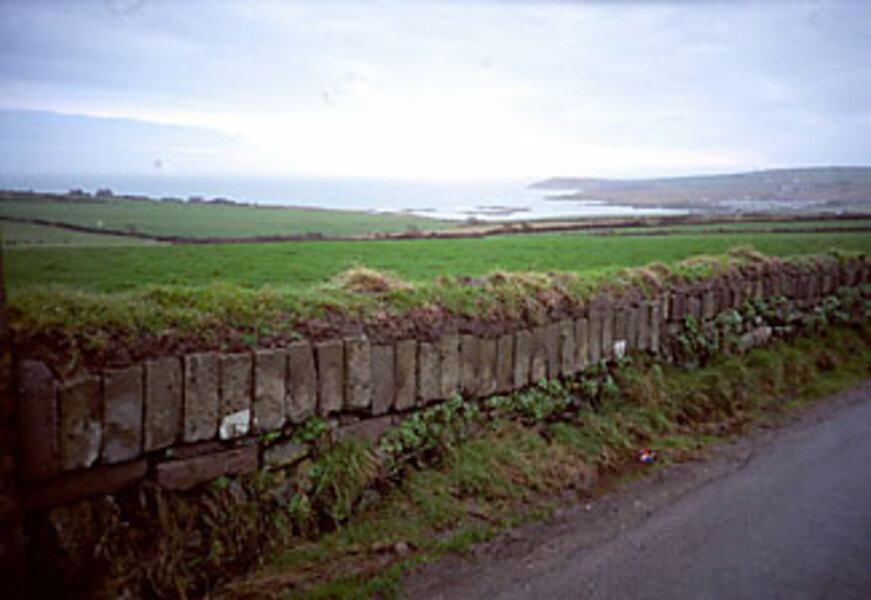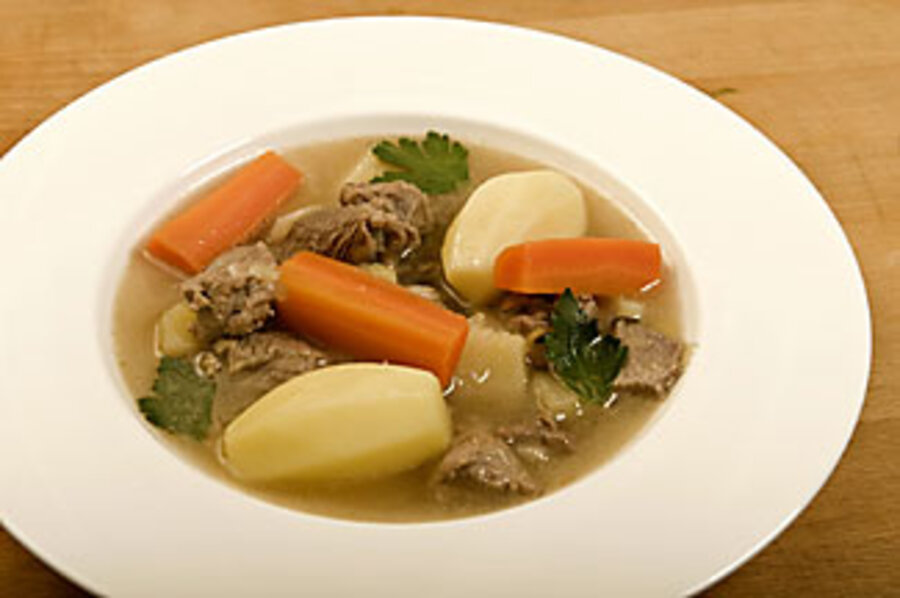Irish chefs return to their roots
Loading...
| Dublin, Ireland
Not so long ago, visitors in Ireland seeking a culinary holiday would have been greeted with blank stares by their hotel concierge, who would have promptly directed them to the nearest French or Italian restaurant. The Irish have long been know for, but not particularly proud of, their meat-and-potatoes cuisine. Of course, all this has rapidly changed since the economic boom of the 1990s. The current recession notwithstanding, residents have become well-acquainted with the finer things in life – especially great, home-grown food.
Today, Ireland has gourmet food shops galore, as well as plenty of ethnic eateries – beyond the usual haute cuisine imports from continental Europe – owing to the influx of immigrants from Eastern Europe, Africa, Asia, and South America. The country also boasts six restaurants with Michelin stars, Most of these are run by native sons, foremost among them being Kevin Thornton, the first Irish chef to earn two Michelin stars for his eponymous restaurant, Thornton's, in Dublin's Fitzwilliam Hotel.
Although he's trained in classic French cuisine, having worked under renowned French chefs Fernand Point and Paul Bocuse in his early days, Mr. Thornton still prefers the foods of his childhood – bacon and cabbage with potatoes and parsley sauce, or a hearty lamb stew – to cassoulet or bouillabaisse.
However, the same can't be said of many of his countrymen, he says.
"Eating habits here have changed completely. People grab a burger or take-away food on the go, and home-cooked meals are becoming a thing of the past," says Thornton, lamenting that old classics like bacon and cabbage are now considered "low-class" foods. "Most typical Irish restaurants won't serve it because they don't think anyone would order it. It's a shame."
Of course, you wouldn't mistake the version of bacon and cabbage at Thornton's, served as a multilayered terrine, with the sort that was once a mainstay on the menus of old-fashioned mom-and-pop restaurants.
Still, beneath the architectural cladding, the components of the traditional dish are all there, and just as in the old days, the ingredients are sourced locally, making each bite a true taste of Irish terroir.
With few exceptions, he says that the produce, cheeses, meat, and seafood served at Thornton's are "as Irish as I am."
Contemporary Irish chefs like Thornton have certainly helped make the "buy local" ethos fashionable again, but so far, the popularity of their updated classic dishes has yet to translate into a revival of the simpler (and less expensive) cuisine they're originally based on.
Thornton isn't surprised by this disconnect among his countrymen: "Back when the Irish started becoming more secular, a lot of people stopped eating fish because they associated it with the Catholic Church. Ireland never had much economic success, so as soon as people got some money in their pockets, they wanted to forget everything from the 'poor old days,' including the food."
Likewise, ever since Ireland became a destination, rather than a departure point, for immigrants, the availability of new and tantalizing ethnic foods has only accelerated the shift away from traditional cuisine. Without a renewed appreciation of the "old ways," Thornton worries that the dishes he enjoyed as a child may be forgotten in a generation or two.
"I contemplated opening a cafe that would serve only traditional Irish food," he says, "but I don't think locals would be interested."
One place that's trying to turn back the clock on appreciation for Irish food is the cooking school at Castle Leslie, about 80 miles north of Dublin in Glaslough, County Monaghan, near the border with Northern Ireland.
Students here don't just learn about classic Irish cooking, they live it: The school is located in the basement of an actual 19th-century castle, converted into a luxury (if quirky) hotel and still owned by members of the aristocratic Leslie family, who have lived in the area since the 1600s.
The 1,000-acre estate is probably best known for its chapel, where Sir Paul McCartney and Heather Mills exchanged wedding vows in happier times.
I enjoyed a private afternoon lesson at Castle Leslie, instructed by the head chef, Gerard Molloy.
Like Thornton, Mr. Molloy is a proponent of stripped-down cooking with fresh local ingredients. It's a concept he strives to impart to his mostly Irish students, many of whom have tasted, but never actually made classic dishes, whether Irish stew or soda bread (referred to as wheaten bread here as in Northern Ireland.)
"When I first began cooking at a restaurant in Dublin, we imported most of our produce from abroad, which made me believe that Irish produce was inferior," he says, emphasizing how common this notion was until recently.
"In time, I've learned that our green fields and lush meadows are home to the finest beef, meat, poultry, and game, and the rivers, lakes, and coastlines abound with fresh seafood," he says. "The key to good cooking is to use the best of these ingredients and to prepare them simply."
In addition to teaching students about Irish food, Molloy says that his ultimate goal is to get them to enjoy cooking and to develop their skills, at whatever level they may be. "People should express themselves within their cooking."
In the classroom, he says, "After each dish is prepared, students sit down to taste and discuss what they have prepared. [I hope] they'll take certain elements home with them and go on developing and creating their own dishes for family and friends."






